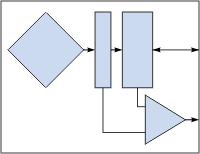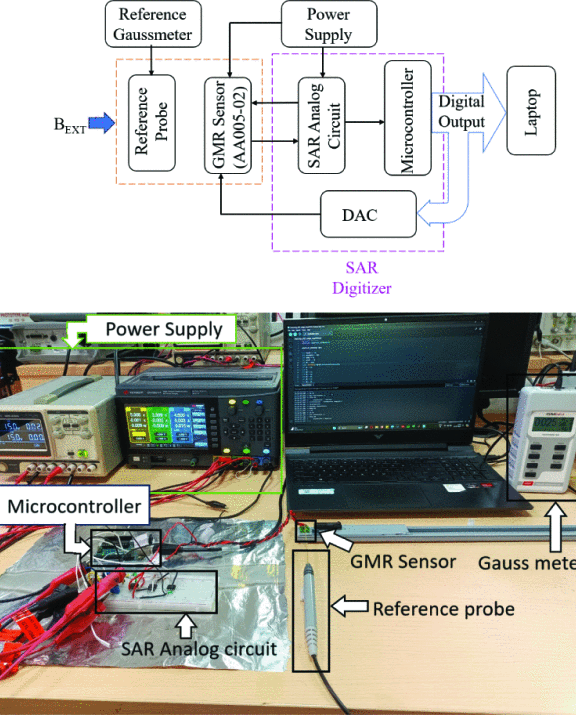
In
This Issue
• Digitizing
Magnetometer Sensors
• Literature Review of Sensor
Digitization
• Tradeshows
 Digitizing
Magnetometer Sensors Digitizing
Magnetometer Sensors
NVE's groundbreaking AA-Series
GMR magnetometer sensors remain popular because of their low noise and unmatched
temperature stability. The one downside is their lower output signal compared
to
TMR sensors, but that can be accommodated with preamplifiers or high-resolution
ADCs (the paper referenced below summarizes the literature
on digitizing NVE sensors).
Microcontrollers With Preamps
Many low-cost microcontrollers have integrated differential preamps, which can
be a good way to extend the effective resolution for a GMR sensor. This video
demonstrates an AA002-02E
sensor breakout board
interfaced directly to an Arduino Leonardo, with 10x and 40x preamplification:
Here's a summary of Arduino boards commonly used to digitize GMR sensors. The
last column gives the effective resolution for a typical 60 mV/V GMR sensor using
the integrated MCU ADC and no external components:
| Arduino
Board |
Processor |
ADC |
Preamp
|
Effective
Resolution
(for 60 mV/V) |
| Arduino Uno |
ATmega328P |
10 bits
|
None |
5.9 bits |
| Arduino Due |
ARM Cortex-M3 |
12 bits |
None |
7.9 bits |
| Arduino Leonardo/Micro |
ATmega32U4 |
10 bits |
10x/40x/200x |
9.3 bits* |
*AAxxx sensor; 60 mV/V; 10x
preamp
 Smart
Sensors With Built-In Digital Cores Smart
Sensors With Built-In Digital Cores
In addition to bridge-sensor elements, we offer smart sensors with built-in digital
cores such as the SM125-10E.
These parts provide linearization, temperature compensation, and I2C or SPI interfaces.
Twelve-bit
and 24-bits versions are
also available.
Papers Involving NVE
 Digital
Interface for Short-Span Resistive Sensors Using SAR Technology Digital
Interface for Short-Span Resistive Sensors Using SAR Technology
2025 IEEE Applied Sensing Conference (APSCON), published Sept. 4,
2025.
Summary:
An NVE AA005-02 GMR analog
sensor was digitized with an Arduino and a DAC. The Arduino implements a successive
approximation algorithm:

The authors also summarize digitization techniques for NVE sensors in the literature:

Excerpt:
"[This work's] digitizer's output was linear with respect to the changing
magnetic field, with a maximum non-linearity error of 1.1%."
More Arduino Applications:
A YouTube
Playlist demonstrates dozens of applications using Arduinos with NVE products,
including various digitization techniques.
More Independent Papers
NVE's Independent Papers page
contains links to numerous peer-reviewed publications using NVE products.
Tradeshows
 NVE
distributor Angst+Pfister Sensors and Power will exhibit at SENSOR CHINA
Sept. 24 to 26 in Shanghai; Booth B001. NVE
distributor Angst+Pfister Sensors and Power will exhibit at SENSOR CHINA
Sept. 24 to 26 in Shanghai; Booth B001.
 Distributor
Dimac Red SpA will exhibit at RADECS, Oct. 1 in Antwerp, Belgium; Booth 16.
RADECS features solutions for radiation environments. NVE's spintronic-based sensors
and isolators are inherently radiation-tolerant. Distributor
Dimac Red SpA will exhibit at RADECS, Oct. 1 in Antwerp, Belgium; Booth 16.
RADECS features solutions for radiation environments. NVE's spintronic-based sensors
and isolators are inherently radiation-tolerant. |
|



